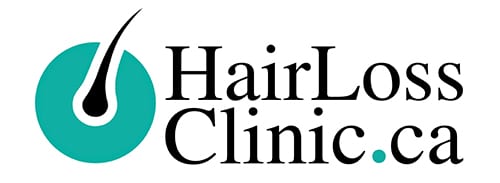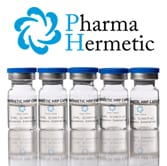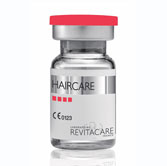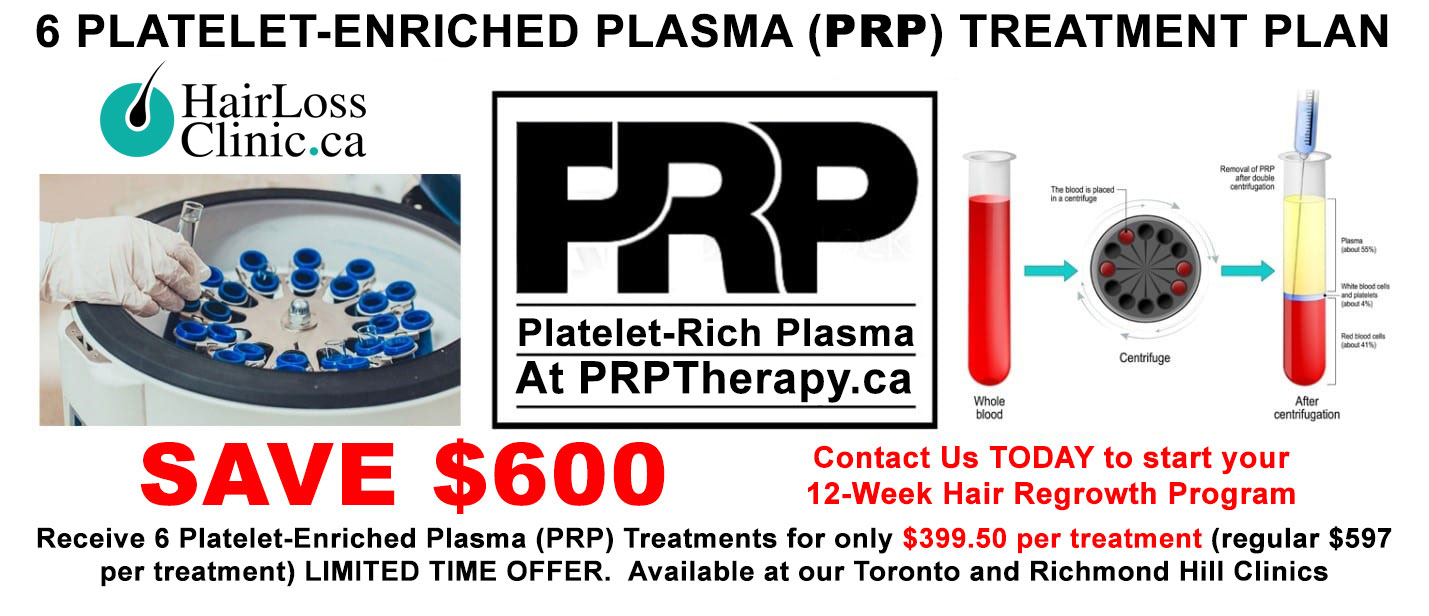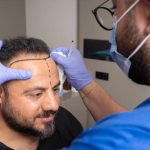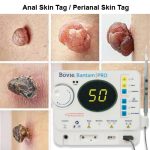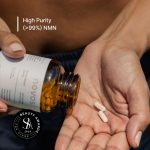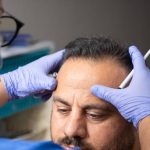Table of Contents
PRP in Hair Treatment: A Promising Solution for Hair Loss
Hair loss can be a significant concern for many people, impacting their self-confidence and self-image. While various medical treatments and prescription medications are available, they may only sometimes be effective in reversing hair loss or promoting new hair growth. PRP in hair treatment is a promising option for alopecia. In this article, we will discuss what PRP therapy is, the process of PRP for hair loss, who should use it, its benefits and risks, the cost of the treatment, and more.
What is PRP?
PRP therapy is a medical approach that utilizes the patient’s own blood to enhance healing and cell growth. To initiate the procedure, a standard blood test is carried out to extract a sample from the patient’s arm. Following this, the sample is put into a centrifuge machine, which separates the platelet-rich plasma from the red and white blood cells through high-speed spinning. The plasma obtained is then used to promote healing and growth in the specific body part targeted for treatment.
PRP is a concentrated form of platelets rich in growth factors and vital in healing. Platelets are essential for blood clotting and the repair of damaged tissues. They release growth factors that promote cell growth, tissue repair, and wound healing.
PRP Therapy Process
To initiate PRP therapy for hair loss, the first step is to consult with a qualified medical professional, such as a board-certified dermatologist or plastic surgeon, who will evaluate the patient’s medical history and hair loss condition to determine their suitability for the treatment. Once approved, the PRP therapy can proceed.
The process starts with a blood draw from the patient’s arm. The blood sample is then placed in a centrifuge machine, which separates the platelet-rich plasma from the red and white blood cells. Subsequently, the PRP is injected into the patient’s scalp at the hair follicle level using a small needle, with injections spaced approximately an inch apart and targeted at areas of hair loss.
Typically, three initial PRP hair treatment sessions are necessary, spaced four to six weeks apart, followed by maintenance treatments every four to six months. The total number of sessions required for optimal outcomes may differ based on the extent of hair loss.
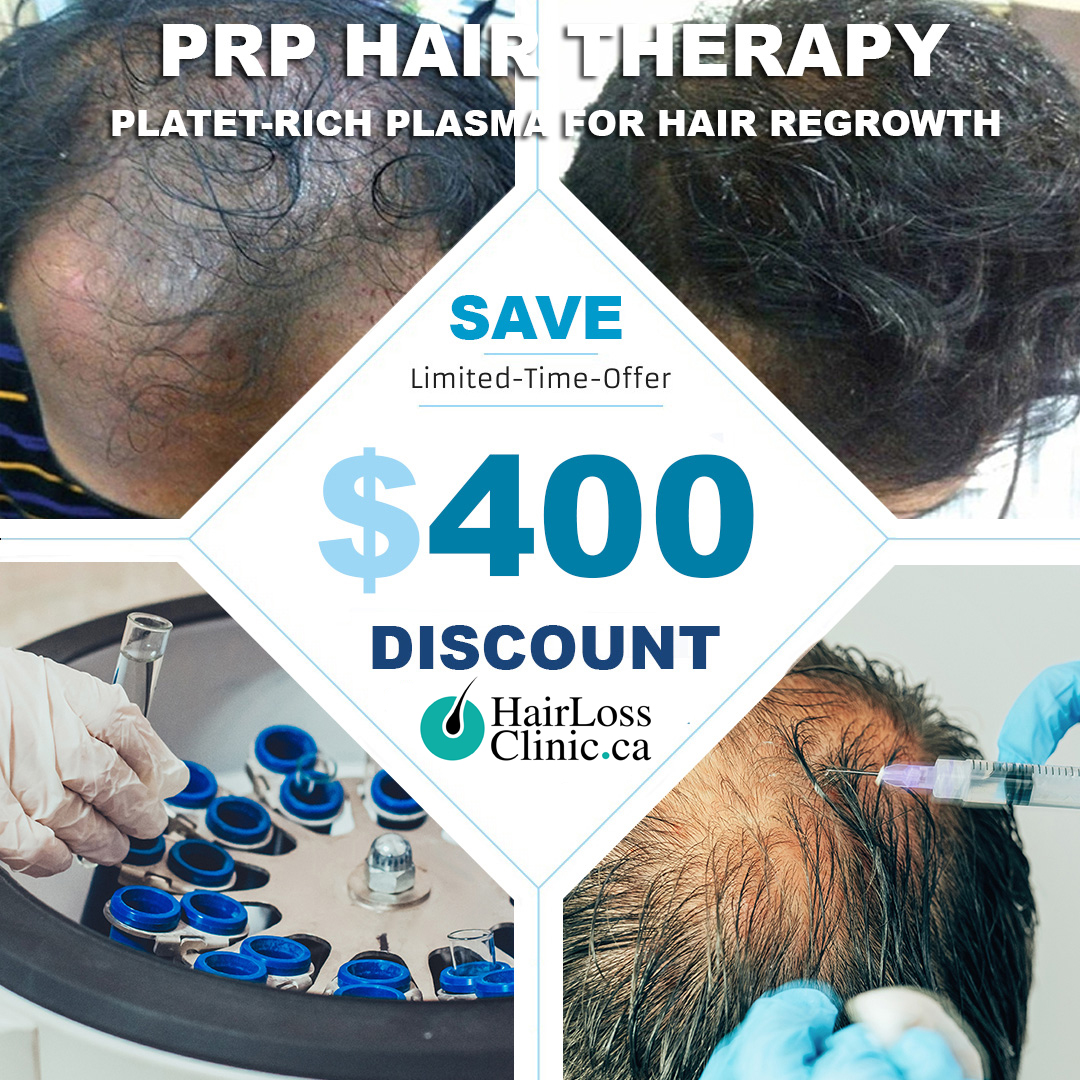
Call or Book for Free Consultation
What You Need to Know
PRP in hair treatment is a relatively new option, but clinical evidence suggests it can be effective for some patients. However, it is not a guaranteed solution, and results may vary. PRP therapy has shown the most effectiveness for patients suffering from androgenetic alopecia, also referred to as male or female pattern hair loss, as well as hair loss caused by stress.
It is important to note that PRP can be a stand-alone treatment, but it is often combined with other hair loss treatments, such as prescription medications or hair transplant surgery, for optimal results.
Does PRP Work for Hair Loss?
Studies have shown that platelet-rich plasma hair treatment is a promising solution to hair loss. A 2020 study published in the Journal of Cosmetic Dermatology found that patients who received PRP injections experienced significant hair loss reduction and increased hair density and volume.
Moreover, PRP therapy is commonly used in sports medicine to promote the healing of muscle and tendon injuries. It has been found to accelerate the healing process and improve outcomes in these types of injuries.
Who Should Use PRP hair treatment?
PRP for hair loss is generally safe for most people and is recommended for patients who are in good health and have inactive hair follicles. Patients who are not good candidates include those with certain medical conditions, such as chronic liver disease, autoimmune diseases, or platelet dysfunction syndromes.
Discussing your medical history with your provider before undergoing PRP treatment is important to determine if it is a safe and appropriate treatment option for you.
Combining PRP treatment with other hair loss treatments, such as prescription medications, is a significant benefit as it can maximize the results in hair restoration. The optimal results from the treatment typically occur after three treatment sessions, spaced about four weeks apart. However, the number of treatments required may vary depending on the individual’s hair loss condition and response to the therapy.
PRP hair treatment is a relatively quick and straightforward process that can be completed in under an hour. The treatment starts with a routine blood draw from the patient’s arm. After the blood draw, the collected blood sample undergoes processing in a centrifuge that separates the platelets from other components, such as red and white blood cells, through the spinning of the blood.
This process results in a concentrated solution of platelets, which is then injected into the scalp using a special device.
PRP injection stimulates the inactive hair follicles, promotes cell growth, and increases the concentration of platelet-derived growth factors, vascular endothelial growth factors, and other growth factors in the scalp. These stimulate new hair growth and improve the density and volume of existing hair.
Risks and Side Effects
While PRP injection is very safe, some minor risks and side effects are associated with the treatment. Typically, patients may experience mild pain, swelling, and redness at the injection site, which are the most common side effects of PRP therapy. These effects are generally temporary and may subside within a few days to a week. In rare cases, patients may experience infection, nerve injury, or scarring at the injection site. Before undergoing the PRP therapy, it is essential to discuss any concerns or possible risks with your healthcare provider.
PRP hair treatment cost
PRP hair treatment costs vary depending on several factors, such as the clinic’s location, the healthcare provider’s experience, and the number of treatments required. A single PRP treatment can cost between $500 and $1500. While this may seem expensive, it can provide long-lasting results and may be more cost-effective than other hair loss treatments in the long run. Check out our current specials for PRP hair treatment cost.
How to find a reputable PRP clinic?
Finding a reputable clinic and experienced healthcare provider is important if you’re interested in PRP for hair loss. One way to begin your search is by conducting online research and reviewing feedback from past clients. You can also ask for recommendations from your primary care physician or dermatologist. Once you’ve found a clinic, schedule a consultation with the healthcare provider to discuss your hair loss condition and determine if it is a suitable treatment option.
Q & A
What is PRP for hair loss?
The use of a patient’s blood to stimulate hair growth is known as platelet-rich plasma therapy. A patient’s blood is drawn and placed in a centrifuge machine to separate the platelets from other components like red blood cells to obtain PRP.
The platelet-rich plasma, which is rich in growth factors, is then injected into the patient’s scalp to stimulate hair growth. PRP therapy usually involves several sessions, with optimal results seen after the third treatment.
How does PRP therapy work?
It works by stimulating cell growth and repairs through the concentrated platelets. Platelets contain growth factors that stimulate the growth of new cells and blood vessels, promoting healing and tissue regeneration. By injecting the concentrated PRP directly into the scalp, the hair follicles are nourished with an increased blood supply, which can lead to improved hair volume and regrowth.
Is PRP effective for male pattern hair loss?
Yes, it is effective for male pattern hair loss. Male pattern baldness is a common type of hair loss affecting many men. The treatment can help to reverse hair loss and stimulate new hair growth in male patients.
What are the main reasons someone might consider PRP for hair loss?
Individuals who want to improve hair volume and promote hair regrowth without undergoing invasive procedures often choose PRP therapy as a preferred non-surgical hair loss treatment with minimal side effects. It is also a popular option for individuals who have not seen the desired results with other hair loss treatments or prefer to avoid prescription medications.
How is the concentration of platelets determined for PRP?
The ideal concentration of platelets in PRP therapy for hair loss varies depending on the patient’s individual needs and the doctor’s recommendation. This is achieved by adjusting the amount of blood drawn and the speed and duration of the centrifugation process. A higher concentration of platelets is generally associated with better outcomes, but this should be balanced with other factors such as the patient’s medical history and hair loss severity.
Is PRP safe for male patients?
PRP therapy is generally considered safe for male patients as it utilizes the patient’s blood, minimizing the risk of adverse reactions or infections. Although like any medical procedure, there are some potential risks, they are usually minor and uncommon.
Can this therapy be used in combination with other hair loss treatments?
It can be combined with other hair loss treatments, such as medications, plastic surgery, and hair transplant. Consulting a board-certified dermatologist or plastic surgeon is recommended to develop an optimal treatment plan, as combining treatments may enhance results.


Are there any additional benefits to PRP for hair loss?
PRP therapy has been demonstrated to offer additional benefits apart from promoting hair regrowth. Some of these advantages include improving the texture of the skin and reducing the visibility of fine lines and wrinkles.
What is the relationship between platelet-derived growth factor and PRP for hair loss?
PDGF, a growth factor present in platelets, is known to stimulate cell growth and repair. PRP uses concentrated platelets, including PDGF, to stimulate hair regrowth and improve the health of hair follicles.
Takeaway
PRP in hair treatment is an advanced hair restoration procedure that utilizes the patient’s blood to prepare an autologous preparation of platelets containing stem cells and growth factors that promote hair regrowth. Several studies have shown that PRP therapy is a highly effective treatment option for two common types of hair loss, androgenic alopecia and alopecia areata, that affect both men and women.
Clients seeking this treatment should consult with a provider specializing in current methods of platelet-rich plasma therapy for alopecia. They can discuss the treatment’s potential benefits, risks, and terms and explain the process, including how it can improve hair volume and density.
Stem cells are an essential component of PRP therapy, and the concentration of platelets plays a significant role in achieving the best results. The treatment process typically takes a few minutes, and most clients can return to their daily activities immediately after the treatment.
Additionally, the therapy is very safe, as the blood supply is used from the patient’s blood. Overall, PRP for hair loss is a promising solution for hair restoration that can improve the self-confidence and self-image of many individuals suffering from alopecia today.
Toronto Trichology Centre
600 Shebourne St #605, Toronto, ON, M4X 1X3
8763 Bayview Ave #5, Richmond Hill, ON, L4B 3V1
The Effect of Platelet-Rich Plasma in Hair Regrowth: A Randomized Placebo-Controlled Trial
Treatment of Androgenetic Alopecia Using PRP to Target Dysregulated Mechanisms and Pathways
Comments are closed.
